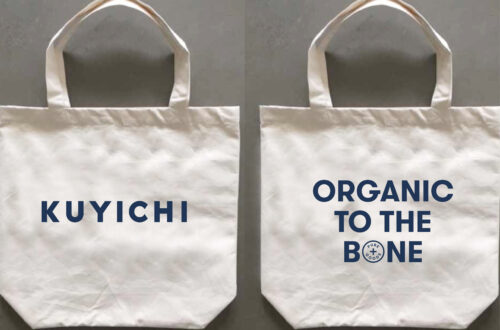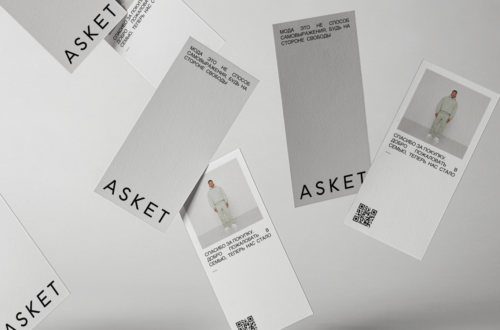What Is Fast Fashion?
In an era dominated by TikTok and Instagram, the resurgence of 70s patterns and 90s grunge in fashion has sparked a frenzy of trends. Major brands are now rolling out sustainable lines and recycling schemes, making it increasingly challenging for consumers to distinguish between eco-friendly options and fast fashion. But what exactly is fast fashion, and why should you steer clear of it?
Fast fashion is a term coined to describe highly profitable yet exploitative businesses. These are brands that churn out replicas of trending styles and mass-produce them at minimal cost. The catch is that these clothes aren’t built to last, as fast fashion thrives on a high turnover of trends, convincing you that you need a new outfit every time you step out and an entirely new wardrobe each season. In essence, these “so last year” clothes may not withstand more than 10 washes.

The Cost of Fast Fashion
The environmental cost of producing these poorly made garments is staggering. For instance, manufacturing a single pair of jeans consumes a whopping 1,800 gallons of water. In the UK alone, over 300,000 tonnes of clothing are discarded annually, with many of these pieces made from polyester, a type of plastic. Polyester can only break down into microplastics, which eventually find their way into the ocean and, consequently, our food chain.
Fast fashion also contributes to a range of social issues. According to the Fashion Checker, an app that assesses the sustainability of fashion brands, a shocking 93% of current fashion brands fail to pay their garment workers a living wage. In many cases, the wages are considerably lower. When you buy a £5 t-shirt, the profits are often disproportionately distributed, leaving factory workers with meager earnings.

Where Does Fast Fashion End Up?
The unglamorous fate of old fast fashion garments is far from appealing. Clothing waste can take hundreds of years to biodegrade, if it even decomposes at all. A disheartening example is the 59,000 tons of unsold or unwanted clothes from the U.S. and Europe that accumulate in Northern Chile’s Iquique port each year. The result is an Atacama Desert covered in mounds of textiles, creating dune-like structures. These toxin and dye-laden garments hardly break down, leading to enduring pollution in the area.
Some discarded clothes sent to Chile meet a fiery end as they are burned, releasing toxins into the air and contaminating underground water channels. The health implications of this pollution are alarming.
Second Hand Fashion: How to Get Started
Transitioning to a more sustainable fashion approach doesn’t require an overnight makeover. Here are some practical steps:
Buy Less
Every fashion purchase has an environmental footprint, irrespective of a brand’s sustainability efforts. To reduce this impact, it’s crucial to evaluate whether you genuinely need a new clothing item before making a purchase. The 30-wear challenge is a helpful guideline: if you can’t envision yourself wearing the item at least 30 times, it may be best to reconsider. Buying less but choosing more intentionally is a fundamental step towards sustainable fashion.
Buy Clothes Built to Last
While sustainable fashion may not always align with every budget, investing in well-made, durable pieces can be a cost-effective choice in the long term. By selecting items designed to withstand the test of time, you not only save money but also reduce the overall demand for fast fashion.
Think Before You Throw
Instead of discarding old clothing, explore alternatives that extend the lifespan of your garments. Options include donating to charity, selling items on platforms like Vinted, Depop, or eBay, attempting to repair them, or finding brands that accept used clothing. Proper garment care, such as eco-friendly dry cleaning services when needed, is another essential factor in preserving clothing.
Second Hand Goodies, Swaps, and Rentals
Opting for second-hand clothing from charity shops, vintage markets, or online platforms like OLIO is an eco-conscious choice. Additionally, consider renting clothes for special occasions, reducing the need for one-time outfits and curbing clothing waste. Clothes swaps within local online groups can rejuvenate your wardrobe in an environmentally friendly manner.
Ethical Fashion Brands
Lucy & Yak
As an independent and ethical brand, Lucy & Yak is renowned for its vibrant dungarees and boiler suits. The brand places a strong emphasis on ethical and sustainable practices.
Pangaia
Committed to sustainability, Pangaia creates colorful loungewear and basics using bio-based fibers and recycled materials. The brand is recognized for its eco-friendly approach.
GNGR BEES
Specialising in activewear made from 100% reclaimed waste materials, including plastic bottles, GNGR BEES takes a conscious stance towards fashion. Their emphasis on reusing and repurposing materials is a commendable effort.
Patagonia
A pioneer in the realm of slow fashion, Patagonia offers long-lasting clothing and operates a repair program that extends the lifespan of their garments. Sustainability has been at the core of Patagonia’s mission since its inception.
Before July
A slow fashion brand that releases only two collections annually, Before July focuses on stylish made-to-order pieces. By limiting the environmental impact of their collections, the brand encourages sustainable fashion choices.
What is fast fashion, and why is it bad for the environment?
Fast fashion refers to the rapid production of cheap, trendy clothing that is designed to be quickly consumed and discarded. This business model encourages a cycle of overconsumption and waste, with new styles hitting stores every few weeks, fueling a constant desire for the latest looks. Unfortunately, this comes at a tremendous cost to the environment. The production of fast fashion garments involves excessive water usage, chemical pollution, and greenhouse gas emissions. For example, producing a single pair of jeans can require thousands of gallons of water, while textile dyeing is a major contributor to water pollution. Additionally, many fast fashion garments are made from synthetic fabrics like polyester, which are derived from fossil fuels and shed microplastics when washed, contributing to ocean pollution.
How does fast fashion affect garment workers and their wages?
Fast fashion’s relentless pursuit of low prices often comes at the expense of garment workers. Many fast fashion brands outsource their production to developing countries where labor is cheap and regulations are lax. This can lead to exploitative working conditions, including long hours, low wages, and unsafe environments. In many cases, workers are paid well below a living wage, struggling to make ends meet and support their families. The pressure to produce garments quickly and cheaply also incentivizes brands to cut corners on worker safety, leading to accidents and health issues.
Where does unwanted clothing end up, and what are the environmental consequences?
The vast majority of unwanted clothing ends up in landfills or incinerators. Clothing waste is a major contributor to environmental pollution, as many garments are made from synthetic materials that take hundreds of years to decompose. In landfills, these clothes can release harmful chemicals and greenhouse gases into the environment. Incineration, while reducing the volume of waste, releases toxic fumes and contributes to air pollution. A significant portion of discarded clothing also ends up in developing countries, where it can overwhelm local waste management systems and contribute to pollution in waterways and soil.
What are some ways to reduce clothing waste and embrace sustainable fashion?
There are many ways to reduce clothing waste and embrace a more sustainable approach to fashion:
- Buy Less and Choose Wisely: Invest in quality pieces that you’ll love and wear for years to come, rather than impulsively buying cheap, trendy items.
- Choose Sustainable Materials: Look for clothing made from organic cotton,hemp, Tencel, or recycled fabrics.
- Support Ethical Brands: Research brands that prioritize fair labor practices, safe working conditions, and transparent supply chains.
- Buy Second-Hand: Thrift stores, consignment shops, and online platforms like ThredUp and Poshmark offer a wide array of pre-loved clothing at affordable prices.
- Repair and Repurpose: Learn basic sewing skills to mend clothes or transform old garments into something new.
- Rent Clothing: For special occasions or items you’ll only wear once, consider renting from companies like Rent the Runway.
- Donate or Recycle: Give unwanted clothes a second life by donating them to charity or textile recycling programs.
What are the best second-hand clothing platforms or stores?
There are numerous online and physical second-hand clothing options available:
- Online Platforms: ThredUp, Poshmark, Depop, The RealReal, Vestiaire Collective
- Consignment Stores: These stores curate high-quality pre-loved clothing from designer and contemporary brands.
- Thrift Stores: Charity shops and local thrift stores offer a treasure trove of affordable and unique finds.
- Vintage Markets: Explore vintage markets for one-of-a-kind pieces with character and history.
- Clothing Swaps: Participate in clothing swaps with friends or community groups to refresh your wardrobe without buying new.
Which ethical and sustainable fashion brands should I consider supporting?
Many brands are leading the way in ethical and sustainable fashion:
- Patagonia: Known for its commitment to environmental activism and high-quality,durable outdoor wear.
- Reformation: Creates stylish and trendy clothing using sustainable materials and practices.
- Everlane: Focuses on transparency, showcasing the true cost of each garment and factory conditions.
- People Tree: A fair-trade fashion pioneer offering beautiful clothing made with organic cotton and natural dyes.
- Veja: Produces stylish and sustainable sneakers using fair-trade organic cotton and wild rubber.
These are just a few examples, and there are many other fantastic ethical brands to discover.
How can I make my wardrobe more eco-friendly without sacrificing style?
Creating an eco-friendly wardrobe doesn’t mean sacrificing style. Here are some tips:
- Invest in Quality: Choose well-made pieces that will last longer, even if they cost a bit more upfront.
- Focus on Versatility: Opt for clothes that you can mix and match to create multiple outfits.
- Choose Timeless Styles: Classic pieces never go out of style and can be worn season after season.
- Experiment with Second-Hand: Thrifting and vintage shopping can be a fun and affordable way to find unique pieces.
- Rent for Special Occasions: Consider renting outfits for weddings or formal events instead of buying new.
- Accessorize: Use accessories to update your looks and get more wear out of your existing clothes.
- Care for Your Clothes: Follow care instructions to prolong the life of your garments and reduce the need for replacements.






